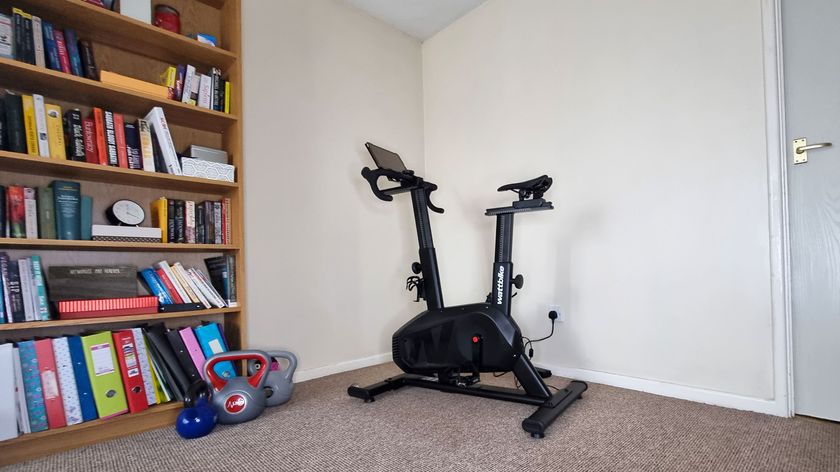Did You Do Today's Workout? Inside the CrossFit Craze

If you haven't heard of CrossFit — the high-intensity training program that blends elements of weight lifting, gymnastics, old-school gym-class exercises, circuit training and aerobic conditioning — it's probably because you haven't yet met one of its loyal and enthusiastic participants.
"People who do CrossFit are open about it. They talk about it a lot. That's what the community builds," said Yuri Feito, an assistant professor of exercise science at Kennesaw State University in Kennesaw, Georgia, who is currently conducting research on the physiological and emotional effects of CrossFit.
The close-knit group that Feito describes is built around doing the grueling workouts together in a group-class setting. These sessions are as challenging for the body physically as they are demanding mentally. And what adds to the community feel of the workout of the day, or the WOD as CrossFitters call it, is that they are timed, and the results of each person's workout —the number of reps they perform, for example —are measured and posted afterward for all to see. [The Best Fitness Apps]
A group class may consist of a 5-minute warm-up beginning with stretching and ending with jumping rope, followed by a "skill phase," such as an Olympic weight-lifting session featuring repetitions of a particular lift. This would be followed by the WOD, such as "Cindy," which consists of doing 5 pull-ups, 10 push-ups and 15 unweighted squats, as many rounds as possible (known as AMRAP) in 20 minutes, and ending with a 5-minute cooldown.
CrossFit, the company, was founded in 1995 by Greg Glassman, a former gymnast. It has grown from its early beginnings in one gym in Santa Cruz, California, into a worldwide network of more than 11,000 affiliates, or "boxes," which is CrossFit-speak for "gym."
The same WOD is posted not only at every box throughout the globe, but also appears for free on the company's website, Crossfit.com. The site was launched in 2001 and is a place where participants can post their workout results, as well as commiserate virtually and motivate one another. The company recommends doing no more than three WOD's in a row, followed by one rest day.
What started as a fringe fitness method has today grown into a worldwide brand that includes a long-term deal with Reebok for CrossFit footwear and workout gear, along with sponsorship of ESPN's televised coverage of the annual CrossFit Games, a competition to crown individual and team champions the "Fittest on Earth."
Sign up for the Live Science daily newsletter now
Get the world’s most fascinating discoveries delivered straight to your inbox.
Variety and community
Two of the biggest appeals of CrossFit are its workout variety and its community feeling, Feito told Live Science. "The workout is always changing," he said.
A WOD may feature anywhere from two to five elements, such as jumping up onto a box, climbing a rope, flipping over tires, doing pull-ups on gymnastic rings, running sprints, throwing a medicine ball against a wall, swinging a kettlebell, performing handstand push-ups, using a rowing machine or doing burpees. (A burpee is a full-body exercise in which a person goes from a standing position into a squatting one, then kicks into a plank position for a push-up, returns to a squat followed by a jump into the air with an overhead clap.) There may be little to no rest time between exercise repetitions. [7 Common Exercise Errors — And How to Fix Them]
CrossFit movements are designed to replicate and prepare the body for any physical challenge that life may throw a person's way, from picking up children to carrying groceries to stashing luggage in an overhead bin, Feito said. Such functional movements "are the essence on which CrossFit is based," he explained.
The community aspect of CrossFit can be a powerful motivator, adding a sense of competition, camaraderie and encouragement, along with a shared sense of struggle, because participants are doing the same exercises at the same time, Feito said.
Group workouts also have a coach, a trained instructor who should monitor participants' technique and form during the activities, and should be aware of participants' abilities and limitations in case activities need to be "scaled," the CrossFit term for modifying exercises to make them easier or suggesting appropriate substitutions.
Risks and rewards
People may also find CrossFit's combinations of resistance exercise, power lifts and endurance components appealing, said Linda Pescatello, a professor of kinesiology at the University of Connecticut at Storrs, who has studied the health benefits of exercise across the human life span.
Any type of high-intensity training program results in health benefits very quickly, and people see pretty immediate improvements from it, she said.
For example, aerobic capacity rapidly increases, and blood pressure and glucose levels may drop, Pescatello said. Visible physical changes in body composition, such as increased muscle mass and reduced body fat, may also occur over time, and there may be a psychological boost that comes from feeling stronger and fitter, she said.
CrossFit is definitely a very popular form of exercise right now, Pescatello told Live Science. But it's also a rigorous program that can be very hard to do, so it might take a highly motivated exerciser to stick with it, she said. Currently, there's not a lot of published data in scientific journals on the long-term adherence rates with CrossFit, she added. [How to Stick to an Exercise Routine]
And doing CrossFit comes at a price. Membership at a CrossFit box can be expensive, with fees comparable to those of an upscale fitness club, and as with all sports industry enterprises, the knowledge and skills of coaches can vary from one location to the next.
Most people may not be able to maintain this type of exercise intensity for the long haul, said Pescatello, adding that one of her colleagues at UConn is doing a small study of CrossFit participants this year.
But the community aspects of CrossFit can be beneficial in helping people to stick with it; research has shown that a supportive community helps people maintain their interest in a fitness program and encourages them to stick with it, said Greg Myer, director of research in the division of sports medicine and director of the human performance lab at Cincinnati Children's Hospital Medical Center. Another advantage of CrossFit is its potential to increase cardiorespiratory fitness and muscular strength, he said.
But Myer said that any high-intensity training program, whether its called CrossFit or P90X, has the potential risk to cause injuries if people jump in and begin doing power lifting and heavy-resistance training without the proper skill set to do these demanding moves. Myer has studied injuries caused by resistance training in adults and children.
With "Olympic-style lifting, [it] can take many years to learn and safely replicate these skills," he said. (CrossFit does require its beginners to complete a fundamentals course, in which coaches introduce newbies to proper technique and form for basic movements before they join the group workouts.)
But although there is the possibility of injury, a recent study that Myer worked on found that CrossFit's injury rate was not high to a concerning extent. In the study, which has not yet been published, researchers looked at about 190 CrossFit participants at four facilities in Florida. The data showed the injury rate for adult CrossFit participants is not a huge problem, Myer said.
The injury rates increased the longer a person participated in CrossFit workouts, and the more hours they spent doing them each week. However, the rates were consistent with those found with similar types of sports, including gymnastics, power lifting and Olympic lifting, Myer told Live Science. The most frequently injured body parts in this study were the shoulder, knee and lower back, which is a similar finding to earlier results shown in the few studies done on CrossFit.
So far, there have been only a handful of studies in peer-reviewed scientific journals of CrossFit's physiological or psychological effects. A study published by researchers at The Ohio State University in 2013 is currently embroiled in several lawsuits citing fraudulent data. That includes a lawsuit filed by the owner of the CrossFit box whose participants were involved in the study, and another filed by the CrossFit company for alleged damages against the publishers of the journal.
A fear of potential backlash against publishing findings may have made some researchers and academic institutions hesitant to study CrossFit, but several new studies are underway as scientists actively investigate the workout's effects on the body and mind.
Follow Live Science @livescience, Facebook & Google+. Originally published on Live Science.
Cari Nierenberg has been writing about health and wellness topics for online news outlets and print publications for more than two decades. Her work has been published by Live Science, The Washington Post, WebMD, Scientific American, among others. She has a Bachelor of Science degree in nutrition from Cornell University and a Master of Science degree in Nutrition and Communication from Boston University.



